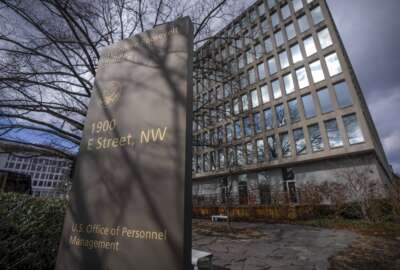OPM amends CFC rule to streamline donor process, improve transparency
The Office of Personnel Management published a final rule to amend the of regulations of the Combined Federal Campaign. The changes make it easier for federal...
The Office of Personnel Management is publishing a final set of regulations to amend the Combined Federal Campaign with the aim of making it easier for federal employees to contribute to the charities of their choice.
“These new regulations will streamline campaign operations to make the program more effective and cost-efficient,” said OPM Director Katherine Archuleta, in a press release. “These changes will also ensure that the greatest amount of contributions go directly to the charities and causes selected by Federal donors. It also will go a long way to ensure that every charitable dollar and campaign expense is visible to charities and donors through every step of the process.”
Over its 50-year history, the CFC has raised more than $7 billion, making it the largest workplace charitable campaign, according to Archuleta.
OPM based its initial proposal on recommendations made by the CFC-50 Commission in May 2012. Those recommendations came on the heels of a March 12, 2012, OPM inspector general report uncovering more than $700,000 in questionable spending by Principal Combined Fund Organizations (PCFOs) that administer local campaigns under the direction and control of Local Federal Coordinating Committees (LFCCs).
Last April, OPM issued its proposed rule amendment and based its final amendment on more than 1,000 comments it received during the 60-day comment period.
According to an April 11 fact sheet, some of the changes in the final rule include:
- Solicitation Period: Typically, the CFC wraps up its three-month solicitation period in December of each year. Last year, though, the campaign deadline was extended to Jan. 15, 2014, to allow those affected by the October 2013 government shutdown more time to contribute. The CFC-50 Commission recommended extending the annual solicitation period into January; however, OPM decided not to extend the length of the campaign due to the number of comments that said the campaign should not be lengthened. Instead, the amended rule gives the OPM director the authority of set the dates for the campaign, with it starting no earlier than Sept. 1, and ending no later than Jan. 15.
- Local Federal Coordinating Committees: LFCCs will continue to maintain local ownership of their campaigns, but now their responsibilities will focus on employee engagement and campaign promotion.These activities will include reviewing charity applications, identifying outreach coordinators and conducting local fundraising.
- Outreach Coordinators: The outreach coordinator’s job will be similar to the marketing functions performed by the PCFOs, providing expertise in employee engagement at the local level.
- Electronic Giving and Processing: To eliminate the expense of processing cash contributions, the campaign will no longer accept cash contributions, although it will process checks electronically. In 2012, less than 10 percent of contributions were made by cash. This move will take advantage of the growth in electronic giving, cut costs and help reduce CFC’s carbon footprint.
- Charity Application Fees: “All charities will pay a non-refundable application fee,” the fact sheet said. “Those that are approved may be charged an additional listing fee. These will help to recover the administrative costs that charities pay to participate in the CFC. Any additional costs will be covered through distribution fees, similar to the current process of deducting campaign costs from charity distributions.”
- Payroll Deduction Disbursements: To streamline the distribution process, agency payroll offices will now disburse and send detailed reports to the Central Campaign Administration, which will then distribute funds from CFC donors to the charities they designated. This moves the distribution process from 150+ CFC financial centers to a handful of Central Campaign Administrators.
“The rule will also make the fund distribution process more transparent,” an OPM press release said. “By streamlining backroom operations as well as charging fees to process applications and print Charity Lists, the CFC will greatly reduce or eliminate administrative expenses deducted from contributions. In addition, the rule will no longer allow the deduction of federation dues and fees prior to the distribution of CFC funds by federations to their member organizations.”
In a blog post, Archuleta acknowledged that some groups have expressed concern over these changes.
“We take these concerns seriously and remain fully committed to working closely with charities and key stakeholders as we implement the final rule,” she wrote. “Under the new rule, federal employees are able to maximize their contributions and know that the greatest amount of their donations goes directly to the charities that they choose.”
RELATED STORIES:
Feds get more time to give, as OPM extends CFC deadline
For 2013, CFC focusing on the people behind the money
Berry: OPM did not authorize CFC meals, entertainment expenses
Task force recommends crackdown on CFC management
Copyright © 2024 Federal News Network. All rights reserved. This website is not intended for users located within the European Economic Area.
Michael O’Connell is senior digital editor of Federal News Network optimizing content for the best user experience. Follow @moconnellWFED
Follow @moconnellWFED






